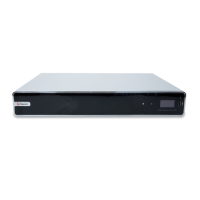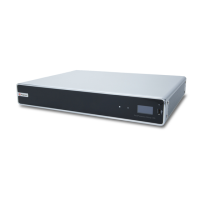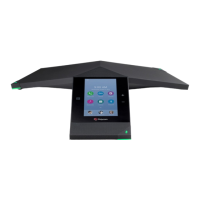Certificate Revocation
During certificate validation, your G7500 system checks whether certificates used for secure
communications are revoked by their issuing CAs.
Your system can check certificate revocation status with one of the following standard methods:
• Certificate Revocation List (CRL): File containing a list of certificates revoked by their issuing CA.
You must manually upload CRLs to your system.
• Online Certificate Status Protocol (OCSP): Your system contacts an OCSP responder, a web
server that provides revocation status through a query/response exchange.
Manually Upload a CRL
You can use CRLs to perform certificate revocation checks on your G7500 system.
Uploading a CRL fails unless you install all of the certificates in the issuing CA’s chain of trust for that
CRL.
This option is not available if your CRL is provisioned to the system.
Procedure
1. In the system web interface, go to Security > Certificates.
2. Configure the following settings:
Setting Description
Revocation Method To use the CRL revocation method, select CRL.
Allow Incomplete Revocation Checks When enabled, a certificate in the chain of trust
validates without a revocation check if no
corresponding CRL from the issuing CA is installed.
3. Select Save.
4. Select Upload CRL File to add a CRL.
You aren’t limited to how many CRLs you can install, but you can only upload 10 at a time.
Successfully-uploaded CRLs display on the page and include information about the issuing CA, when the
CRL was updated, and when it’s scheduled to update again.
Delete a CRL
You can remove CRLs that were previously uploaded on the G7500 system.
This option is not available if your CRL is provisioned to the system.
Procedure
1. In the system web interface, go to Security > Certificates.
2. Under Revocation, select Trash next to the CRL you want to delete.
Configure the OCSP Method
You can use the OCSP method to perform certificate revocation checks on your G7500 system.
Procedure
1. In the system web interface, go to Security > Certificates.
2. Configure the following settings:
Securing the System
Polycom, Inc. 53
